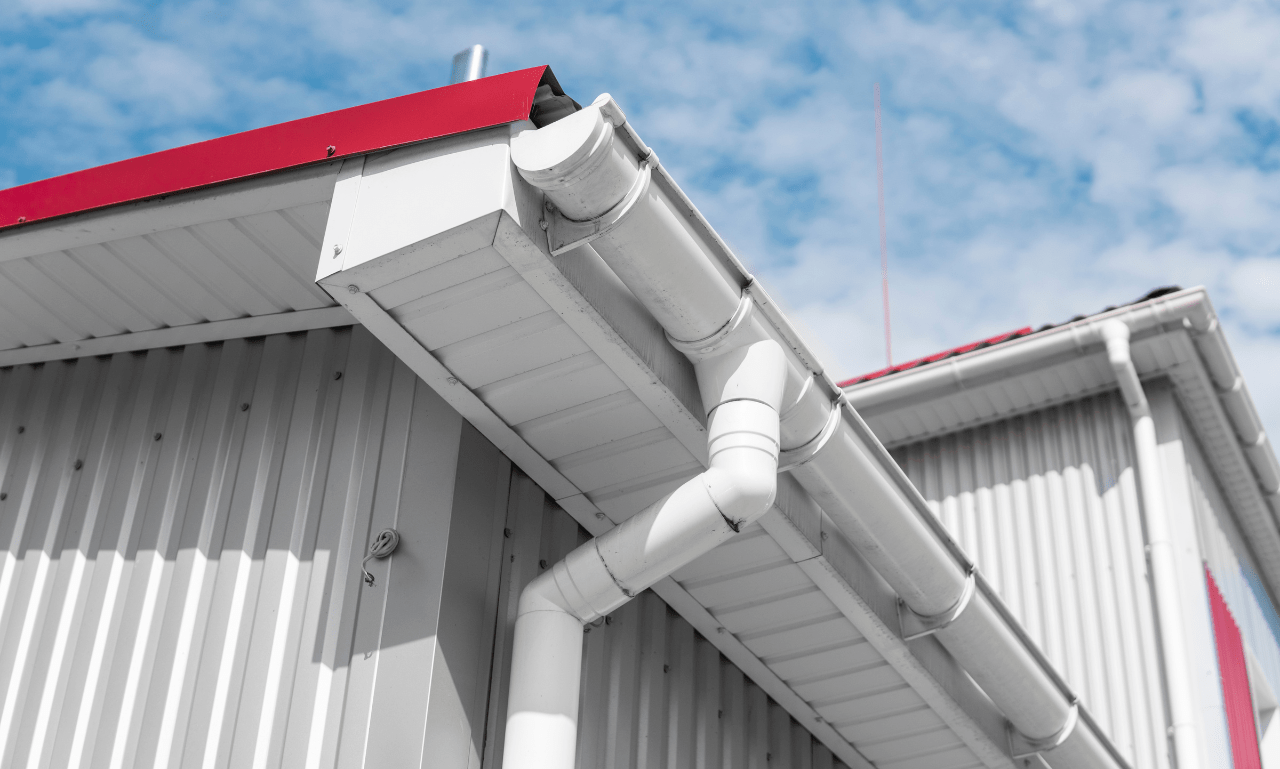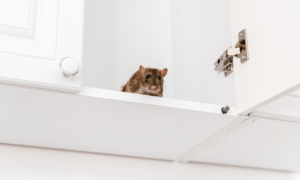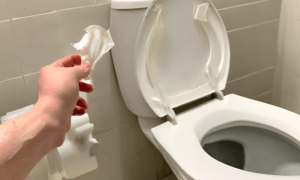Introduction
Understanding the Importance of Home Gutters
Home gutters are a critical component of your house’s exterior. They play a significant role in directing rainwater away from your home, preventing water damage, erosion, and foundation issues. Gutters also help safeguard your landscaping and keep your basement dry. In this guide, we’ll explore the world of DIY home gutters, from installation to maintenance and enhancements.
Why DIY Gutter Projects Are a Cost-Effective Solution
Engaging in DIY gutter projects can be a cost-effective approach to ensuring your home’s protection. By learning the ins and outs of gutter installation, maintenance, and repairs, you can save money on professional services and gain the satisfaction of accomplishing tasks on your own. We’ll take you through the steps of DIY gutter projects to help you get started.
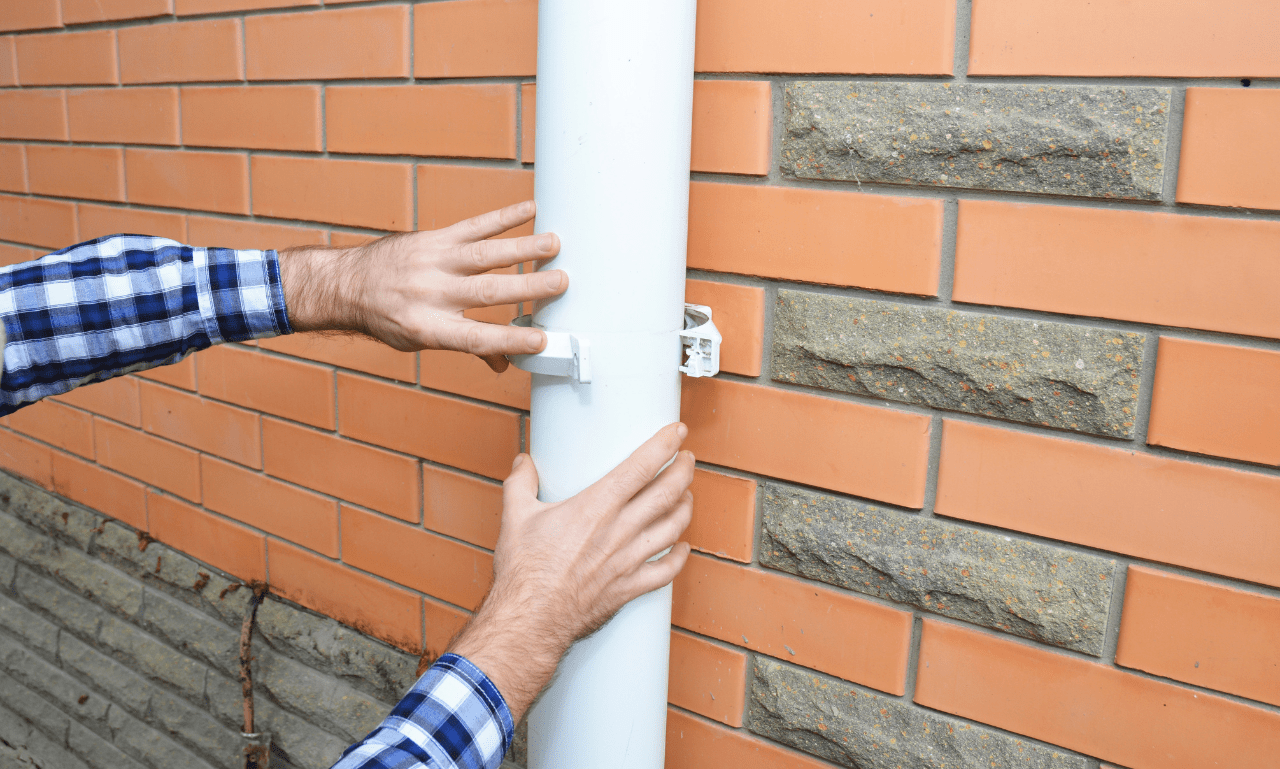
DIY Gutter Installation
Preparing for a DIY Gutter Installation Project
Before embarking on a DIY gutter installation project, thorough preparation is key to a successful outcome. By taking the following steps, you can set the stage for a smooth and effective installation process:
- Safety First: Begin by ensuring your safety. Gather safety equipment such as gloves, safety glasses, and a sturdy ladder. Check the ladder’s stability and ensure it’s on level ground.
- Tools and Materials: Collect all the necessary tools and materials. You’ll need gutter sections, hangers, screws, a drill, gutter outlets, downspouts, and elbows. Having everything ready saves time and minimizes interruptions during installation.
- Plan the Layout: Examine your home’s roofline and decide where the gutters will be placed. Plan the gutter’s slope to direct water towards downspouts. Mark the locations for hangers and downspouts.
Choosing the Right Gutter Materials: Types and Sizes
Selecting the appropriate gutter materials is a critical decision in your DIY project. Here’s what you need to consider:
- Gutter Types: Gutter options include K-style and half-round gutters. K-style gutters are the most common, featuring flat backs and bottoms with decorative fronts. Half-round gutters have a semicircular shape, offering a more traditional look. Your choice depends on your home’s style and personal preference.
- Gutter Materials: Gutters are typically made from various materials, including aluminum, vinyl, steel, and copper. Aluminum is a popular choice due to its durability and rust resistance. Vinyl is lightweight and affordable, but it may not be as durable as other materials. Steel and copper are sturdy options with a longer lifespan but come at a higher cost.
Measuring and Sizing Gutters for Your Home
Accurate measurement and sizing of gutters are crucial to a successful installation. Here’s how to get it right:
- Measure the Roofline: Use a tape measure to determine the length of your home’s roofline where the gutters will be installed. Measure each section separately, and add them together to get the total length.
- Calculate the Slope: Assess the roof’s slope to ensure the gutters are correctly pitched. A typical slope is about 1/4 inch for every 10 feet of gutter. This gradient allows water to flow towards the downspouts.
Step-by-Step Gutter Installation Process
The actual installation of gutters involves a series of steps that, when followed diligently, ensure a successful outcome:
- Attach Gutter Hangers: Begin by attaching gutter hangers to the fascia board. These hangers will support the weight of the gutters. Make sure they are evenly spaced for stability.
- Install Gutter Sections: Attach the gutter sections to the hangers, following the slope you calculated. Connect the sections using screws and seal the joints with silicone caulk to prevent leaks.
- Add Gutter Outlets: Install gutter outlets at appropriate locations to direct water towards the downspouts. Ensure they are securely fastened.
- Position Downspouts: Position the downspouts at strategic points to allow water to flow away from your home’s foundation. Attach elbows and extensions as needed.
- Test the System: After installation, test the gutter system by pouring water into the gutters. Ensure water flows smoothly towards the downspouts without any leaks or blockages.
By following these preparatory steps and the installation process, you’ll be well-prepared to tackle your DIY gutter installation project. Proper preparation and attention to detail are the keys to success.

Gutter Maintenance and Cleaning
The Importance of Regular Gutter Maintenance
Regular maintenance of your home gutters is often an overlooked task but is crucial for ensuring their proper functioning. Neglecting gutter maintenance can lead to costly issues, such as water damage, clogs, and structural problems. Here, we emphasize the significance of maintaining a proactive gutter care routine to preserve your home’s integrity.
DIY Tips for Cleaning and Preventing Clogs
Cleaning your gutters is a routine task that, when done correctly, can save you from costly repairs down the line. We provide valuable DIY tips and techniques for safely cleaning your gutters and preventing clogs. These include using tools like gutter guards, scoops, and even pressure washers for more efficient cleaning. Regular cleaning helps keep your gutters clear of debris and allows them to channel rainwater effectively.
Detecting and Repairing Common Gutter Issues
Even with regular maintenance, gutters can develop issues over time. It’s essential to detect and address these problems promptly to prevent further damage. Common issues include leaks, corrosion, and sagging gutters. We’ll explore these issues in detail and provide step-by-step DIY techniques for identifying and repairing them. By addressing these problems early, you can extend the lifespan of your gutters and save on potential repair costs.
Seasonal Maintenance Schedule for Gutters
Maintaining a seasonal gutter maintenance schedule is essential for preserving the functionality of your gutters. We’ll provide specific guidelines for what to do in each season to keep your gutters in optimal condition. For example, cleaning before the winter season prevents ice dams, while inspecting for damage after heavy storms ensures that your gutters remain robust year-round. With a well-planned seasonal schedule, you’ll proactively address potential issues and enjoy the benefits of well-maintained gutters.
By adhering to a regular gutter maintenance routine, homeowners can ensure that their gutter system remains in excellent condition, protecting their homes from the damaging effects of rainwater and debris.
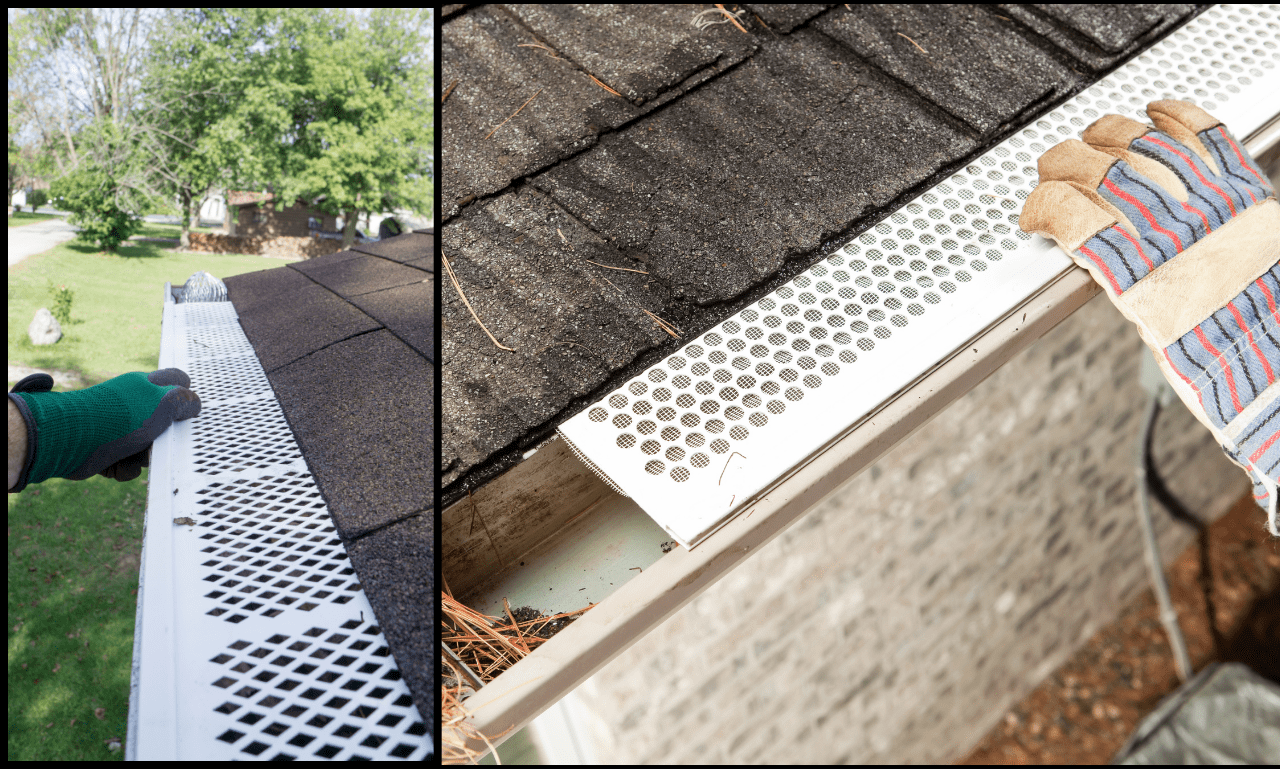
Upgrades and Enhancements
Adding Gutter Guards for Improved Functionality
Gutter guards are a valuable enhancement for your gutter system, offering multiple benefits. These guards are designed to prevent debris, such as leaves, twigs, and debris, from entering your gutters. By doing so, they play a crucial role in maintaining the free flow of rainwater, reducing the frequency of gutter cleaning, and extending the lifespan of your gutters.
Choosing the Right Gutter Guards
Selecting the appropriate gutter guards for your home is essential. We’ll explore the various types of gutter guards available, including mesh, screen, bottle brush, and foam inserts. Each type has its unique features and advantages. By understanding your specific needs, you can choose the gutter guards that best suit your situation.
Installation Guidelines
Installing gutter guards is a DIY-friendly project, and we’ll provide step-by-step guidelines for their installation. You’ll learn how to properly measure, cut, and secure the guards to your existing gutter system. This upgrade not only reduces the maintenance effort but also helps safeguard your home against water damage.
Installing Rain Barrels for Water Harvesting
Rain barrels offer an eco-friendly and cost-effective way to utilize rainwater for various household purposes. By connecting them to your gutter system, you can harvest and store rainwater, reducing your reliance on municipal water sources and conserving water.
Choosing the Right Rain Barrel
We’ll discuss the different types of rain barrels available, from simple DIY containers to more advanced commercial options. Understanding the features and capacities of these barrels will help you make an informed choice that aligns with your water conservation goals.
Installation Process
Installing rain barrels is a straightforward process that we’ll guide you through. You’ll learn how to position your rain barrel, connect it to the downspout, and maintain the system for optimal functionality. This eco-friendly upgrade not only reduces your utility bills but also contributes to a sustainable home.
Enhancing Curb Appeal with Decorative Gutters
Your home’s exterior appearance matters, and decorative gutters can add a touch of elegance and individuality to your residence. We’ll explore various options for enhancing your home’s curb appeal with decorative gutters, including ornamental designs and colors.
Choosing Decorative Gutter Styles
There is a wide range of decorative gutter styles to choose from, ranging from elegant scroll designs to classic crown moldings. We’ll discuss how to select the style that complements your home’s architecture and personal taste. These decorative gutters not only serve a functional purpose but also become an aesthetic focal point of your home.
Installation Tips
Installing decorative gutters involves unique considerations, and we’ll provide tips and guidelines for this process. From measuring and cutting to securing decorative gutter hangers, you’ll gain the knowledge and skills needed to successfully enhance your home’s exterior.
Gutter Paint and Maintenance for a Fresh Look
Over time, gutters can lose their original luster due to exposure to the elements. We’ll provide information on how to repaint gutters to refresh their appearance and maintain their functionality.
Repainting Gutters
We’ll walk you through the process of repainting your gutters, from cleaning and priming to choosing the right paint. Repainting is a cost-effective way to breathe new life into your gutters and preserve their aesthetic appeal.
Maintenance Techniques
Proper maintenance techniques are essential to extending the lifespan of your gutters. We’ll discuss how to seal and repaint your gutters as part of your regular maintenance routine. By maintaining your gutters, you can ensure that they not only function effectively but also look appealing.
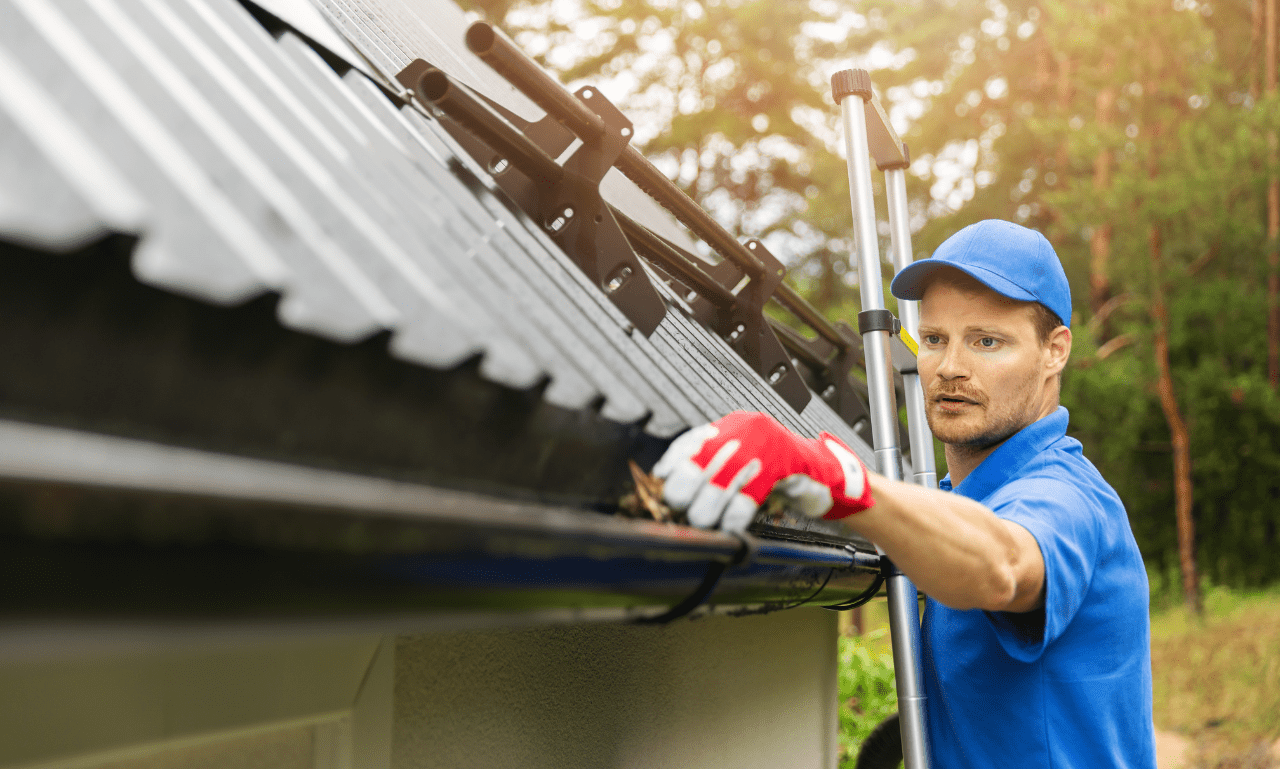
Chapter 4: Troubleshooting and Repairs
Identifying and Fixing Leaks and Corrosion
Leakage and corrosion are common issues that can affect your gutters. Identifying these problems early is essential for preventing further damage to your home. Here’s how to recognize the signs of leaks and corrosion in your gutters:
Signs of Gutter Leaks:
- Water dripping or overflowing in places where it shouldn’t.
- Stains or watermarks on your home’s exterior or siding.
- Pools of water or erosion around your foundation.
- Mold or mildew growth along the gutter lines.
- Rust or visible holes in the gutter material.
If you notice any of these signs, it’s time to take action. To address small leaks or holes, you can use a gutter sealant or patch kit specifically designed for your gutter material. Follow the manufacturer’s instructions carefully for the best results. For more extensive leaks or severe corrosion, you might need to replace the affected gutter sections.
Addressing Gutter Overflow and Poor Drainage
Gutter overflow and poor drainage are issues that can lead to water damage, both to your home’s exterior and its foundation. Here’s how to diagnose and address these problems:
Diagnosing Overflow and Drainage Issues:
- Water overflowing the sides of your gutters during rain.
- Erosion, water puddles, or damage near your home’s foundation.
- Misaligned or clogged downspouts.
- Gutters that sag or appear tilted.
To address overflow and poor drainage, consider the following solutions:
- Install downspout extensions to divert water away from your foundation.
- Clean your gutters regularly to remove debris and prevent clogs.
- Adjust the slope of your gutters to ensure proper water flow.
- Check for proper gutter size; if your gutters are too small, they may not handle heavy rainfall effectively.
Dealing with Sagging or Loose Gutters
Sagging or loose gutters compromise their functionality. To identify and correct these issues, follow these steps:
Identifying Sagging or Loose Gutters:
- Noticeable drooping or tilting of the gutters.
- Loose or detached gutter hangers or brackets.
- Gaps or separations between gutter sections.
To deal with sagging or loose gutters, consider these solutions:
- Reattach loose gutter hangers or brackets with screws or nails.
- Use gutter hanger straps to support sagging sections and ensure they are level.
- Replace damaged or rusted hangers and brackets for long-term stability.
DIY Solutions for Common Gutter Problems
Finally, we’ll provide a comprehensive list of common gutter problems and DIY solutions to address them. Whether you’re dealing with rust, loose spikes, gutter separations, or other issues, you’ll find practical step-by-step instructions in this section to restore the functionality of your gutters. From resealing seams to realigning gutter sections, you’ll be equipped with the knowledge and skills to keep your gutters in top condition.
Conclusion
Empowering Homeowners with DIY Gutter Expertise
In conclusion, this comprehensive guide empowers homeowners with the knowledge and skills needed to manage their home gutters effectively. From installation and maintenance to enhancements and repairs, you now have a complete understanding of DIY gutter work. Whether you aim to save on costs or take pride in maintaining your home, this guide equips you with the tools and knowledge to keep your gutters in top shape.
Protecting Your Home with DIY Gutter Care
The goal is to ensure your home remains safeguarded from water damage and erosion through proactive and budget-friendly gutter care. By applying the information in this guide, you can take control of your gutter system, enhance its longevity, and enjoy the peace of mind that comes with a well-maintained home.
If you’re curious about the fascinating world of Orbeez and their growth, don’t miss our in-depth exploration in “The Mystery of Orbeez: How Long Does It Take for Them to Grow.“

